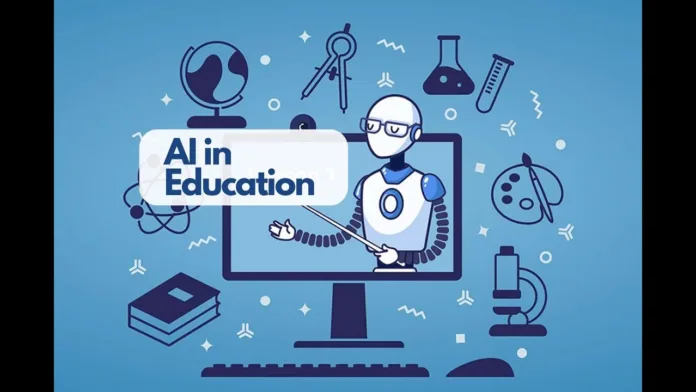In the evolving world of technology, AI in education is emerging as one of the most transformative trends shaping the future of learning. With the integration of artificial intelligence into classrooms, schools and institutions are witnessing a fundamental shift in how instruction is delivered, how students learn, and how teachers support diverse educational needs.
The phrase AI in education isn’t just a buzzword—it represents a dynamic revolution that is redefining teaching methodologies and academic environments. From intelligent tutoring systems to predictive analytics and AI-powered grading tools, artificial intelligence is making learning more efficient, accessible, and personalized.
The Rise of AI in Education
Artificial intelligence is now a pivotal part of the education ecosystem. Driven by the need for customized instruction and scalable teaching solutions, educational institutions are leveraging AI to address long-standing challenges such as large class sizes, varied learning paces, and curriculum design.
Technologies like machine learning, natural language processing, and computer vision are being used to enhance both teaching and learning. AI can analyze student data, recommend learning paths, and identify at-risk students long before traditional methods would detect them.
How AI is Enhancing Personalized Learning
One of the most significant benefits of AI in education is its ability to tailor content to individual student needs. AI systems can:
Track student progress in real time
Adjust lesson plans based on learning pace
Provide instant feedback
Recommend additional resources for improvement
For instance, AI-powered platforms use algorithms to evaluate performance data and deliver content that best suits a student’s style—visual, auditory, or kinesthetic. This level of personalized learning with AI ensures students aren’t left behind or unchallenged.
Intelligent Tutoring Systems
AI-driven tutoring systems can simulate one-on-one human instruction. These systems evaluate a learner’s strengths and weaknesses and adjust teaching approaches accordingly. Tools such as chatbots and voice assistants are now equipped to:
Answer academic queries instantly
Provide step-by-step explanations
Assist with language translation and pronunciation
Offer 24/7 support
These AI-powered teaching tools are helping bridge the gap where teacher support might be limited, especially in large or remote classrooms.
Automating Administrative and Teaching Tasks
Teachers today juggle numerous administrative tasks along with teaching duties. AI is helping reduce this burden by automating:
Grading of assignments and exams
Attendance monitoring
Performance reporting
Scheduling and reminders
This automation allows educators to focus more on student engagement and innovation in instruction rather than routine tasks.
Predictive Analytics for Better Outcomes
AI uses predictive analytics to forecast student outcomes. By analyzing attendance, participation, assessments, and other data, AI systems can predict potential dropouts, recommend interventions, and support decision-making for curriculum development.
Such systems empower institutions to proactively support student success rather than reacting to academic failures after they occur.
Virtual Classrooms and Remote Learning
With the rise of remote education, especially post-pandemic, AI has made virtual classrooms more interactive and engaging. Facial recognition, gesture detection, and sentiment analysis tools are now being used to gauge student engagement and adapt teaching strategies in real time.
Speech-to-text tools and real-time translations are enhancing accessibility for students with disabilities or those in multilingual settings, making AI in education inclusive and adaptive.
Challenges of Integrating AI in Education
Despite its benefits, integrating artificial intelligence in classrooms comes with challenges:
Data privacy concerns: Schools must handle sensitive student data responsibly.
Cost of implementation: Not all institutions can afford advanced AI tools.
Training for educators: Teachers need ongoing professional development to effectively use AI platforms.
Ethical considerations: Bias in algorithms and over-reliance on technology may affect fairness and quality.
Educational stakeholders must address these issues thoughtfully to harness AI’s full potential.
The Future of AI in Education
Looking ahead, AI in education is set to become even more immersive with technologies like augmented reality (AR), virtual reality (VR), and gamified learning experiences. Intelligent content creation, real-time performance analytics, and AI-powered mental health support systems are on the horizon.
As artificial intelligence continues to evolve, it will drive innovation not only in how students are taught, but also in what they are taught—encouraging more creativity, collaboration, and critical thinking.
Conclusion
AI in Education: How Artificial Intelligence is Transforming Learning is more than a technological shift—it’s a reimagination of the educational experience. By automating tasks, personalizing content, and enhancing engagement, AI is making education smarter, more inclusive, and future-ready.
While challenges remain, the benefits of AI in education are undeniable. From better academic outcomes to empowered educators, artificial intelligence is shaping a generation of learners who are not only knowledgeable but also adaptable and innovative.
